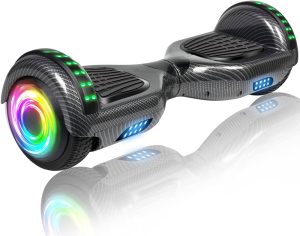Unveiling the Secrets to Resolving Hoverboard Not Charging Woes
Hoverboards, the sleek and futuristic mode of personal transport, often encounter a frustrating setback: the inability to charge properly. Whether you’re an avid rider or an occasional enthusiast, facing this issue can put a sudden halt to your thrilling adventures. Fear not! As your Chief Charging Officer, I’m here to decode the intricacies of hoverboard charging issues and guide you through troubleshooting steps to get your board back on track.

Understanding the Basics
Before diving into intricate fixes, let’s grasp the fundamentals. Hoverboards typically come with a rechargeable battery pack and a charging port. The charging process should be straightforward: connect the charger to the port, wait for the indicator light to signal charging, and voila! However, when this doesn’t happen, several factors might be at play.
Troubleshooting Steps
1. Power Source Check:
- Outlet Testing: Use a different working outlet to eliminate the possibility of a faulty power source.
- Power Surge: Consider using a surge protector to safeguard against power fluctuations that might affect the charging process
2. Inspect the Charger:
- Visual Inspection: Look for any signs of wear and tear, especially at the connection points and along the cable.
- Testing with Multimeter: Use a multimeter to check the charger’s voltage output. If it doesn’t match the rated output, consider replacing the charger.
3. Hoverboard Connections:
- Cleaning the Port: Gently clean the charging port using a cotton swab or a small brush, ensuring no debris obstructs the connection.
- Port Damage: If the port appears damaged, it might require professional repair or replacement.
4. Battery Reset:
- Safety Precautions: Before resetting, ensure the hoverboard is powered off and disconnected from the charger.
- Disconnecting the Battery: Some hoverboards allow easy access to the battery; if feasible, disconnect it for the reset process.
5. Battery Health:
- Testing Battery Life: Use a voltmeter to measure the battery’s voltage. If it’s significantly below the expected level, it might need replacement.
- Replacement Consideration: Older hoverboards might have batteries reaching the end of their lifespan. Contact the manufacturer for suitable replacement options.
6. Firmware Updates:
- Manufacturer Guidance: Follow the manufacturer’s instructions precisely to update the firmware. This might involve connecting the hoverboard to a computer or using a specific app.
7. Additional Considerations
- Temperature Impact: Extreme temperatures, both hot and cold, can affect battery performance. Charging in moderate temperatures might yield better results.
- Charging Time: Ensure you’re charging the hoverboard for the recommended duration specified in the user manual. Overcharging can sometimes lead to battery issues.
- Quality of Components: Sometimes, third-party chargers or low-quality components might not function optimally with your hoverboard. Using genuine parts can make a difference.
Seeking Professional Help
If none of the above steps yield results, it might be time to seek professional assistance. Contact the manufacturer’s customer support or a certified hoverboard repair service. They possess the expertise and tools to diagnose and resolve complex issues.